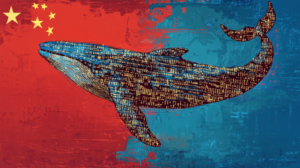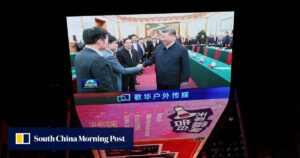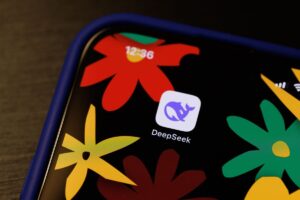OpenAI Claims DeepSeek Improperly Copied ChatGPT, While Also Facing Copyright Allegations

Emergence of DeepSeek’s R1 AI Model
In recent weeks, a small AI company from China named DeepSeek has garnered worldwide attention following the release of its innovative AI model, R1, on January 20. Prior to this, DeepSeek was relatively unknown outside China, but the launch of R1 has changed that narrative significantly.
What Makes R1 Unique?
R1 is categorized as a "reasoning" model, which allows it to perform tasks methodically while providing users with visibility into its thought process. This model represents an enhancement over DeepSeek’s previous V3 model launched in December. While R1 offers capabilities nearly equivalent to OpenAI’s latest model, o1, it does so at a significantly lower cost.
Immediate Impact
Just a few days after the release, DeepSeek’s app experienced a surge in downloads, surpassing ChatGPT. This sudden popularity caused stock prices of several tech companies in the United States to decline sharply. In response, OpenAI accused DeepSeek of indirectly stealing elements from its models to create R1.
OpenAI’s Statement:
In a statement to major media outlets, OpenAI expressed concerns about DeepSeek’s practices. They mentioned efforts to protect their technology while investigating the situation.
Understanding Model Distillation
To understand the implications of this controversy, it is important to explain the concept of "model distillation." This is a machine learning method where a smaller, more efficient "student model" learns from the outputs of a larger "teacher model." The student model is trained by asking the teacher enough questions, without needing to access the internal mechanisms of the teacher directly.
OpenAI suspects that DeepSeek trained R1 by scaling up queries to its own advanced model, o1, thereby indirectly capturing know-how to refine its own systems.
Resource Efficiency
DeepSeek remains confident in stating that the development and training of R1 required only a fraction of the resources compared to those of its competitors. Critics, however, remain cautious about these claims, suggesting an extensive hardware expenditure of up to $500 million for R1’s development. Despite this, DeepSeek still completed the project more efficiently than its rivals, potentially due to their ability to distill knowledge from larger models.
Innovation Under Constraints
The current geopolitical landscape has created challenges for Chinese tech companies. Following a U.S. ban on exporting top-tier AI chips, DeepSeek was forced to innovate by utilizing less powerful but less expensive processor units. This restriction on powerful chips may have inadvertently propelled Chinese companies to maximize the capabilities of available hardware, fostering unique innovation strategies.
Legal Challenges Ahead
OpenAI’s terms of service prohibit the use of its models for developing competing products. However, OpenAI has faced its own accusations regarding copyright infringement, stemming from utilizing large datasets gathered from the internet, including copyrighted materials. In the face of multiple lawsuits from creators and publishers, OpenAI justifies its practices under the doctrine of "fair use," asserting that such use is essential for competitive advancement.
The ongoing legal battles not only illustrate the rapid growth of AI technology but also highlight the need for updated legal frameworks to address these evolving issues.
A Shift in the AI Landscape
DeepSeek’s rise signifies a potential shift in how AI models can be built economically and effectively. With OpenAI recently releasing o3-mini, its latest consumer-focused model, it aims to reclaim its position atop the AI market by demonstrating superior performance at a lower cost.
As the AI landscape diversifies, consumers stand to benefit from increased options and competitive pricing. Furthermore, as AI technology evolves, there is hope for improvements in efficiency, which can greatly reduce global energy consumption associated with AI model training and operation.
DeepSeek’s entrance into this competitive arena challenges existing giants and encourages a global dialogue on best practices for data collection and usage in the AI industry.






